Showing 961–972 of 1201 results

This book is the first attempt at a systematic cultural-anthropological study of the stonemill tradition the grinding of the peasant women who singing for ages on their hand-mills have articulated tradition in their work-songs.
Tangible patrimony usually attracts attention and efforts of preservation. Intangible cultural traditions do often go with the winds of history when their social and material setting disappears. Such is the case with the songs that women in India, while grinding before dawn, have kept singing for ages on their hand-mill. Aside from the male society, they hoarded up for themselves a non-material matrimony. Today, though, motor driven flour-mills have put to rest these voices of silence, their legacy remains with them: immense and immemorial, purely feminine and oral, anonymous and personal, collective and intimate. Words from the heart, they glitter like flames in the domestic hearth. This book is the first attempt of systematic cultural-anthropological study of that unique tradition. It offers keys to apprehend it. Why should this tradition, first of all, originate from a shared compulsion to open up ones heart? This differentiates the women singers intentionality from the didactic treatment of pundits and sants who make grinding and grindmill the allegory of an advaitic bhakti. For women Lakshmis dedicated to serve the Fortune of their family and its lineage life in plenty is their raison detre. When preachers and swamis advocate a holy insensibility to earthly things and fellow human beings, the work of grinding epitome of womans office carries worldly utopias of abundance and reveals a quest for salvation through bonds of affective attachment. Eventually, the study raises radical questions on such crucial concepts as those of bhakti, tradition, the status of popular traditions versus elaborate constructs of literati. The symbolism of the stonemill in religious Marathi literature is constrasted with the experience of grinding of peasant women as the latter articulated it in their work-songs. What is sought is an epistemological insight into the cognitive processes which result in the dialectic blend of affinity and glaring inconsistency that one observes between those two levels of cultural creativity.
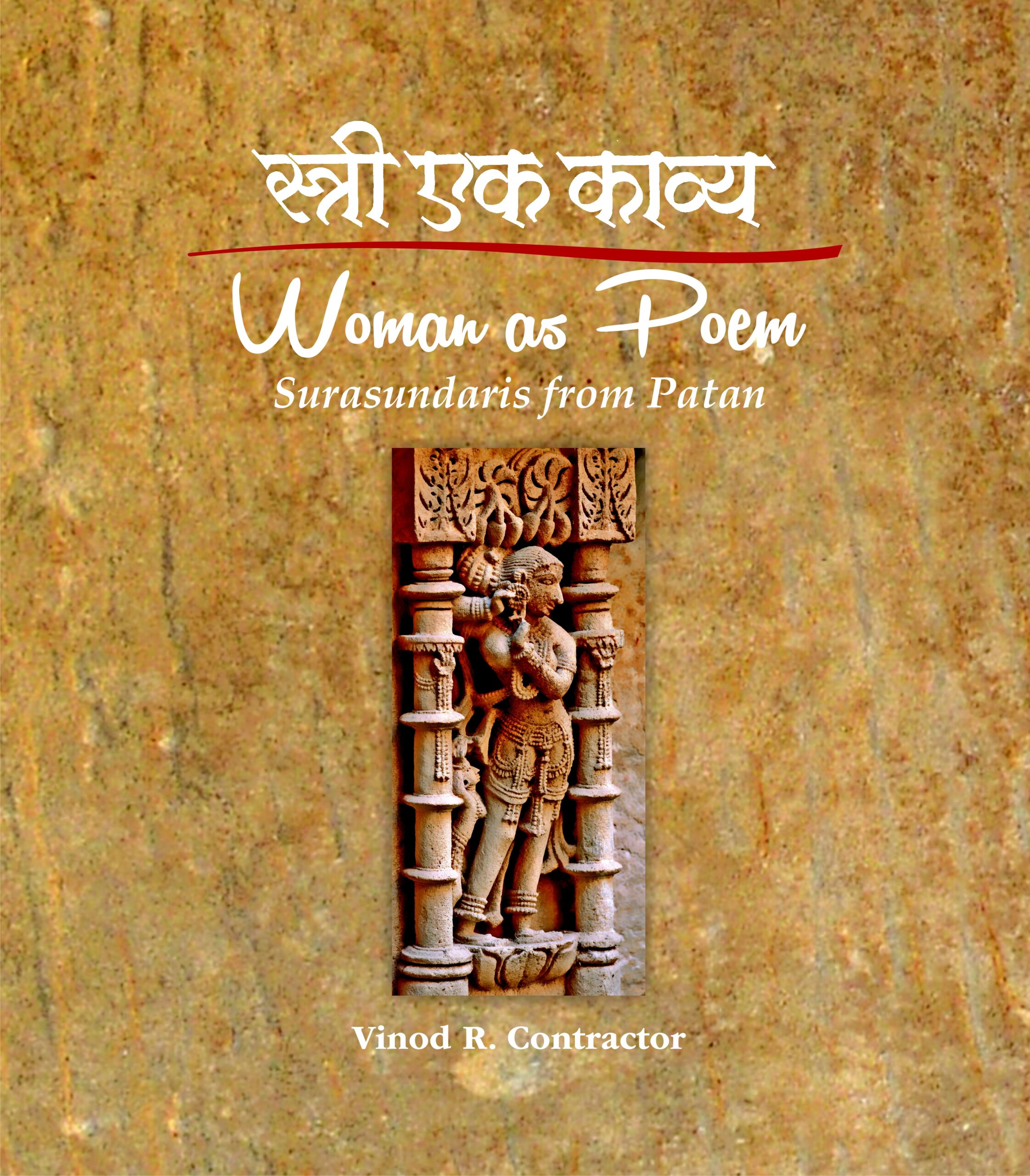
Surasundaris on the walls of Rani-ki-Vav remind us that sensuality is the doorway to spirituality, that growth and fertility are as important as piety and devotion. The stepwell in Patan is perhaps the most admired structure of its kind and is a testament to the imagination and skill of the sthapati.
Surasundaris on the walls of Rani-ki-Vav remind us that sensuality is the doorway to spirituality, that growth and fertility are as important as piety and devotion, that even before we undertake dhyana of the deity in the sanctum or in different parts of the vav we must saturate our mind with the beautiful so that we can attain the state of serenity and purnatva.
Sensually evocative, beautiful from tresses to the toes, with eyes downcast, surasundaris are an expression of unsurpassed grace. They are a reminder that a woman is the most adorned expression of prakriti, that to indulge in it is to affirm our senses and enrich our mind, but the aesthetic journey does not stop there. The contemplative viewer will see the surasundari as a poem and a song, where every limb and every gesture are the lyrics, the texture of the stone is the rhythm, where metaphor is the key that will unlock the many meanings and suggestions.
The stepwell in Patan is perhaps the most admired structure of its kind and is a testament to the imagination and skill of the sthapati and as we walk through its many-tiered pavilion we almost hear the hushed voices of the queen and her retinue that stayed there away from menacing eyes and sweltering heat. Come, tread softly, as you are entering a hallowed space of beauty.
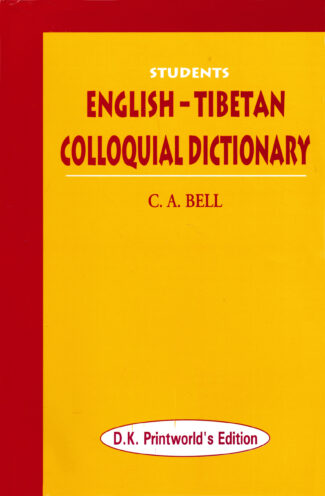
The Dictionary containing more than eleven thousand words including honorific words, is a practical handbook that attempts to provide a quick yet thorough understanding of the colloquial Tibetan language. It presents Tibetan words in romanised form for pronunciation by those who do not understand Tibetan.
The Dictionary is a practical handbook that attempts to provide a quick yet thorough understanding of the colloquial Tibetan language. A special feature of the Dictionary containing more than eleven thousand words including honorific words, is that the Tibetan words are presented in romanised form for pronunciation by those who do not understand Tibetan. An introductory chapter details the structure and system of pronunciation of Tibetan letters and words. It combines an easy approach with incorporation of features like two or more Tibetan words against the same English equivalent and the literary form in the Tibetan character, with the colloquial form in the romanised Tibetan, when the colloquial and Tibetan forms differ from each other to some extent. All this is to aid in a deeper knowledge of the subject. A special feature of this edition is that all the corrections listed in the errata of the second edition have been carried out in the main text. The volume will be particularly useful to scholars of Tibetan language and English-speaking students learning the language.

The Dictionary containing more than eleven thousand words including honorific words, is a practical handbook that attempts to provide a quick yet thorough understanding of the colloquial Tibetan language. It presents Tibetan words in romanised form for pronunciation by those who do not understand Tibetan.
The Dictionary is a practical handbook that attempts to provide a quick yet thorough understanding of the colloquial Tibetan language. A special feature of the Dictionary containing more than eleven thousand words including honorific words, is that the Tibetan words are presented in romanised form for pronunciation by those who do not understand Tibetan. An introductory chapter details the structure and system of pronunciation of Tibetan letters and words. It combines an easy approach with incorporation of features like two or more Tibetan words against the same English equivalent and the literary form in the Tibetan character, with the colloquial form in the romanised Tibetan, when the colloquial and Tibetan forms differ from each other to some extent. All this is to aid in a deeper knowledge of the subject. A special feature of this edition is that all the corrections listed in the errata of the second edition have been carried out in the main text. The volume will be particularly useful to scholars of Tibetan language and English-speaking students learning the language.
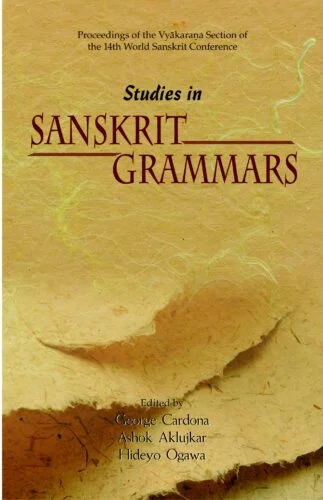
This book addresses issues in Sanskrit grammar, principally Paninian grammar, works of Paniniyas, including Patanjalis Mahabhasya, Bhartrharis Vakyapadiya, etc. It also covers the Sanskrit grammar of Paulinus a Sancto Bartholomaeo, and includes a study examining whether formal hand gestures in Indian dance could come within the range of vyakarana.
The importance of ancient and medieval contributions in India to the field of vyakarana and thereby to our knowledge of grammar and the history of linguistics is universally accepted. This volume presents sixteen contributions to this field of study which were presented at the fourteenth World Sanskrit Conference held in Kyoto, Japan, September 1st-5th 2009. The papers cover a wide range of subjects, both chronologically and thematically. Most of the studies concern aspects of Paninian grammar, with respect to both Paninis grammar proper and to works of Paniniyas, including Patanjalis Mahabhasya, Bhartrharis Vakyapadiya and the Kasikavrtti of Jayaditya and Vamana. There are also contributions that range farther afield, covering the Sanskrit grammar of Paulinus a Sancto Bartholomaeo, Paninian features to be seen in the Lilatilakam of fourteenth century Kerala, and a study considering whether formal hand gestures used in Indian dance can possibly come within the range of what is called vyakarana. This collection should be of interest not only to Sanskritists but also more generally to students of Indian culture and linguists.
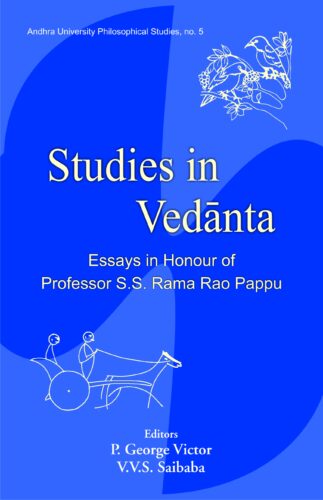
Containing both intellectually stimulating and academically entertaining essays and papers presented at the Fifteenth International Congress of Vedanta in the United States, this book honours the Congress founder, Professor Rama Rao Pappu. This volume analytically discusses the ideologies of Shankara, Ramanuja, Madhva, Vallabha, Tyagaraja and Satya Sai Baba.
Professor Rama Rao Pappu, who has been teaching philosophy in US universities since the sixties founded the International Congress of Vedanta in 1986 at Miami University, Oxford, Ohio, USA. Vedanta Congresses initiated and organized systematically and selflessly by Dr. Pappu during the past nineteen years have played a very productive and positive role. Most of the essays included here are the papers presented by the contributors at the Fifteenth International Congress of Vedanta apart from the invited essays contributed by Professor Pappus friends and admirers in India and abroad. Essays in this volume have been arranged in six sections covering the areas of Vedanta Metaphysics, Advaita Epistemology and Ethics, Schools of Vedanta and other systems, Global Parallels and finally Vedanta and the Contemporary World. Both intellectually stimulating and academically entertaining, this volume contains analytic discussions on Shankara, Ramanuja, Madhva, Vallabha and Tyagaraja. Enlightening articles on Radhakrishnan, Sri Satya Saibaba and Sunderlal Bahuguna are also included. As a whole, covering the concepts of Adhyasa, Sakshi, and Jivan-mukti, perspectives on Shruti, Yukti, and Tarka, discussions on Yoga, Tantra and Music and the East-West Parallels have culminated in Sartrean Existentialism and Chinese Dao.

The 54 Sanskrit slokas (with Roman transcription and translation in Hindi, English) make obeisance to gods and goddesses, the guru and the Highest Reality (Brahman). Included is a tape-recorded version of the slokas, a rendering by experts in sloka-recitation.
Stuti-Manjari is a collection of some famous Sanskrit shlokas that form an intrinsic part of the daily worship and prayer of the Hindus. The fifty-four shlokas compiled make obeisance to Shiva, Vishnu and his avataras (incarnations), the Sun God, the Earth Goddess, Mahalakshmi (Goddess of wealth), Sarasvati (Goddess of wisdom) and Hanuman among other gods and goddesses as well as the guru (preceptor) and the Highest Reality the Indivisible Brahman. The shlokas praising the physical attributes of the deities and gloryfying their powers are girven in the original Sanskrit verse form followed by their transcription in Roman script and a translation of their meanings in the both Hindi and English. Accompanying this breviary is a tape-recorded version of the shlokas rendered by experts well -versed in the technical aspects involved in shlokas-recitation. The sholkas thus recited to a melodious tune not only acquaint the listener with the correct pronunciation of the words but also have the great effect of refreshing the mind when listened to in the free-flowing diction add richness to the piety evoked by the shlokas and the lofty thoughts contained in them. The shlokas are an offering of the Janana-Pravaha Centre for Cultural Studies in Varanasi which aims at promoting the meanings and message of diverse aspects of Indian culture such as, the varied art forms and classic masterpieces of literature.

Success is a journey, not a destination. It comes beacuse of proper planning and its execution, having the ingredients of opportunity and talent. These 100 quotes bring forth the meaning, ways and means, and different facets of success. Each quote has a stimulating painting of Lord Ganesha, the Lord of Peace, Prosperity and Wisdom, resonating the theme.
The authors, through 100 quotes, brings forth the meaning, ways and different facets of success. Each quote has a stimulating painting of Lord Ganesha, the Lord of Peace, Prosperity and Wisdom, representing the theme. Many of these recollective quotes are from highly reputed global personalities, who enlightened this world with their lives and services, and the rest are from the pens of the authors.
Success is a highly subjective topic. It means different to different people. Climbing the ladder of success is like climbing a mountain, from one peak to another. Succcess is a journey, not a destination. It comes beacuse of proper planning and its execution, having the ingredients of opportunity and talent. Luck is not a criterion in success. Dream big, but practical, have self esteem, work hard, remove negative thoughts from the mind, learn from the past experiences, and have the willingness and readiness to change, improve and achieve. One is set to embrace success for sure!.
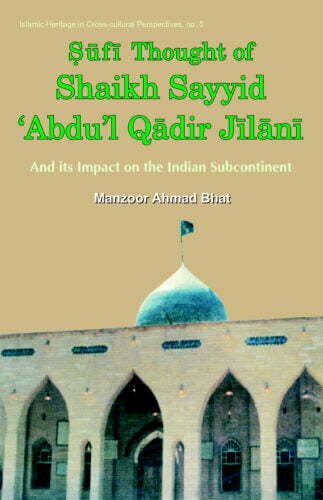
The book deals with the subject of Sufism with special reference to the Sufi thought of Shaikh ‘Abdu’l Qadir Jilani, and discusses the impact of his teachings in terms of the emergence of various Qadiriyya centres in the Indian subcontinent.
The volume mainly deals with the Sufi thought of one of the most revered and influential Sufis, Shaikh Abdul Qadir Jilani (eleventh-twelfth century), particularly its impact on the culture and tradition of the Indian subcontinent. It presents a historical perspective on the religious-political theorists of the time and pattern of administration then. In an interesting study, it deals with the life and works of the saint and emergence of Sufi thought and organization of Sufi silsilas. The focus is on the original utterances, sermons and discourses of the scholar-preacher and interpretation of the most recurring themes in Jilanis vocabulary in a simple manner. The themes relate to unity of the Divine Being, enforcement of the lawful, love of humanity, polytheism, the spiritual struggle in man and different ahwal (states) and maqamat (stations) of the Sufi thought. It observes that Jilani has not deviated from the fundamental teachings of the Quran and the Sunnah. It discusses the impact of his teachings in terms of the emergence of various Qadiriyya centres in the subcontinent and flourishing of his thought after his time.
The volume will be useful to scholars of Islamic studies and general readers interested in understanding the evolution of Islamic thought in the Indian subcontinent.
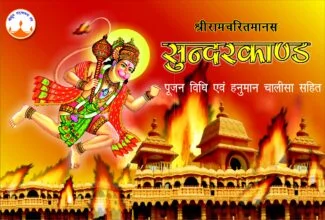
Taken from Ramcharitmaanas, this small book contains rules for doing Sundar Kaand Puja and includes Hanumaan Chaalisaa, Sankatmochan Hanumaanashtak, Bajrang Baan, Sri Ram Stuti and Hanuman and Ramayana aaratis.
Taken from Ramcharitmaanas, this small book contains rules for doing Sundar Kaand Puja and includes Hanumaan Chaalisaa, Sankatmochan Hanumaanashtak, Bajrang Baan, Sri Ram Stuti and Hanuman and Ramayana aaratis.

The book makes a fascinating study of the unique philosophical tradition revolving around the concept of the Sunya Purusa the ineffable, indescribable and non-dual Reality that originated in medieval Orissa. Examining a range of philosophies, it throws light on the theories of this rare school of Vaisnavism that was Vaisnavite in form but Buddhistic in essence.
This pioneering study of the indigenous philosophical tradition of Orissa which evolved between the 15th 16th century ce brings into limelight the wonderful syncretism of Buddhism and Vaishnavism, traditions that are generally considered philosophically antithetical. A deep metaphysical quest underlies the enquiries and analyses of this assimilative tradition and is epitomized in the works of the philosopher-poets of Orissa in the concept of the Shunya Purusha the ineffable, indescribable and non-dual reality. This is a unique concept that encompasses within its fold the idea of Jagannatha (the Vaishnavite deity of Puri) as Shunya. The author explores the whole range of Indian philosophical heritage including Vaishnavism, Buddhism, Advaita Vedanta, Yoga, and Natha tradition to bring out the highpoints of this rare philosophical tradition. She, very competently, throws light on the philosophical theories/concepts of Bauddha Vaishnavism Vaishnavic in form but Buddhist in spirit. The book is a valuable guide on this distinctive Orissan Vaishnava tradition to all students and scholars of Indian religion and philosophy.

The work offers an in-depth study of the sautramani Vedic sacrifice in its caraka and kaukili forms. It shows how the brahmanas compare it with a soma sacrifice, and how sautramani itself has evolved over time.
Associated with wrath, gambling and, at the symbolic level, with darkness and misery, sura has been strongly condemned in Vedic literature. Yet, paradoxically, it has not just found its way into a Vedic sacrifice itself: called sautramani, but has even been sanctified in the rajasuya and punarabhisheka rituals as well. However, it is sautramanis sacrificial fire alone to take in liquor as an oblation material. Dr. Madhavi Kolhatkar here offers an indepth study of this sura-related Vedic ritual: of both its caraka and kaukili forms, together with all their attendant details. The book explores the possible origin and nature of sautramani sacrifice, addressing itself to a range of the hitherto-unanswered questions, for instance; How did sura come to have its acceptance in a shrauta ritual (like sautramani), despite its outright disapproval in the Vedic texts? Why is the sautramani performed after rajasuya? Is there any linkage between sautramani and punarabhisheka which both happen to involve the sura-ritual? How is, then, sautramani related to the agnicayana? And, what is the underlying importance of the myths that tell about the primeval performance of the sautramani? In spelling out the social, medicinal and ritualistic significance of sautramani, the author also shows how the Brahmanas often compare it with a soma sacrifice, and how sautramani itself has evolved over the time. In the context of this Vedic ritual, she also highlights the hierarchic contentions between the brahmanas and the kshatriyas in the ancient Indian society. It is a piece of valuable research for Indologists, especially the scholars of Sanskrit, Vedic studies and ancient Indian history and culture.
| × |
|
Jadavpur Journal of Philosophy 1 x ₹270.00 |
| × |
|
Vada in Theory and Practice 1 x ₹1,170.00 |